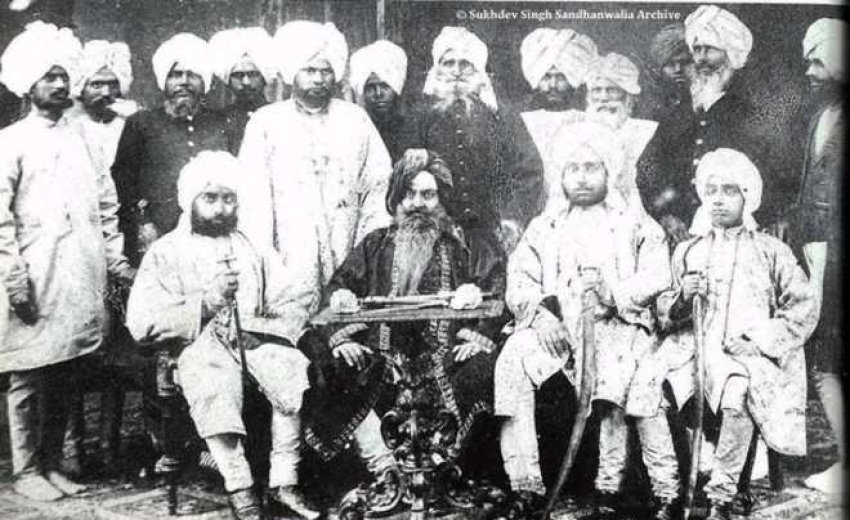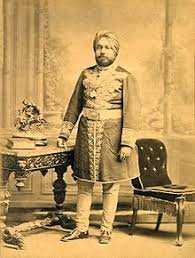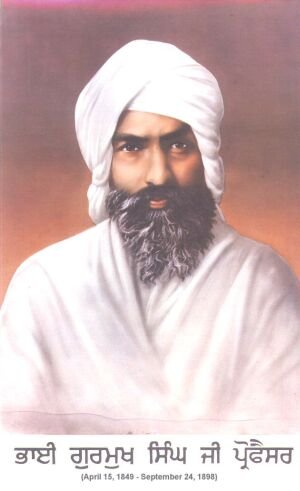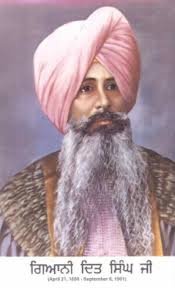Sikh history is brimming with the accounts of challenging situations Sikhs withstood, both internal and external, however, it is the Sikh response to these which has every single time established new thresholds and has motivated the upcoming generations. Presently, Sikhism is confronting many serious challenges on various levels. One such issue which needs an equal degree of contemplation and pragmatism is the increasing rate of conversion to Christianity in rural Punjab. The conversion of turbaned Sikhs in Public ceremonies is a matter demanding serious consideration in Sikh society. Huge increase in the level of activities by Christian missionaries in recent years is posing a serious threat to the Sikh hegemony in rural Punjab mainly in Doaba and Majha regions. The missionaries preach a superstitious version of Christianity thus successfully luring a considerable vulnerable mass into their fold. The factors contributing to this new phenomenon are manifold - the marginalization of lower caste Sikhs from the mainstream, lack of awareness regarding Sikhism and the economic incentives of conversion being the primary. Much of these circumstances are similar to the ones which led to the start of Singh Sabha movement in 1873 of which we are celebrating 147 anniversary on 31st July.
Soon after the British annexation of Khalsa Raj Sikhs suffered a huge fall in terms of power in Punjab. A considerable chunk of the populace which embraced Sikhism during the reign of Maharaja Ranjit Singh returned to their past practices. A majority of the remaining community was marred by the prevalence of religious patronization, practice of caste and rituals and female infanticide which have no acceptance in Sikhism. Many prominent Sikh personalities took up the task of purging Sikh community of the practices which they felt are far from what Guru's had taught. Nirankaris who were followers of Baba Dyal Singh of Peshawar and Namdharis known as Kukas of Baba Ram Singh were a sect started in this direction, however, were limited in scope and nature.
Added to the upper mentioned degeneration amongst Sikhs was external pressure from Christian missionary campaigns and vile activities of Arya Samaj which preached against the very existence of Sikhism as a separate faith. The news of the conversion of Maharaja Ranjit Singh's youngest son Maharaja Duleep Singh, later of Harchand Singh of Kapurthala dynasty to Christianity came as a striking blow to the tiny Sikh community. On February 1952 the headquarter of Church Missionary organization was established in Amritsar which just in three years opened 375 new branches and converted more than 27000 people into Christianity. In the year 1862 Punjab Missionary conference was held which increased the pace of Christian missionary activities through Convent Schools, colleges and other job opportunities. In 1873 four Sikh students of Amritsar Mission school came up with a wish to convert to Christianity. This event generated a common will among Sikhs to start an institutionalized effort to tackle the problems in the present situation. On 31st July of the same year Sardar Thakur Singh Sandhawalia, Baba Khem Singh Bedi, Raja Bikrama Singh Fareedkot, Prof Gurmukh Singh and many other personalities formed Singh Sabha Amritsar in a huge gathering of Sikhs. In the following years, Khalsa Schools and newspapers were also established. In the initial years, its main focus was on historical research and towards building a consensus on several significant issues of Sikh theology by long positive discussions.
The success of Singh Sabha Amritsar led to the formation of Singh Sabha Lahore in 1880 which nurtured movement's shining stars, namely, Prof Gurmukh Singh, Bhai Ditt Singh, Bhai Mayya Singh and Bhai Jawahar Singh and Bhai Kahn Singh Nabha. Prof Gurmukh Singh travelled to far distant places for Parchar (Campaigns) and formed Singh Sabhas in other districts of Punjab.
Giani Ditt Singh and Bhai Kahn Singh Nabha published many books and essays forming a Sikh intellectual response and propagating the sovereignty of Sikh Doctrines. Books like Ham Hindu Nahin by Bhai Kahn Singh and Nakli Sikh Prabodh by Ditt Singh are worthwhile to mention. Due to this phenomenal groundwork and the institutionalized framework laid by this movement Sikh community was able to start the Gurdwara Sudhar Movement early 20s which led to the formation of Shiromani Akali Dal and Shiromani Gurdwara Prabandhak Committee in 1920.
In his landmark thesis on Singh Sabha movement, Sikh historian Dr Gurdarshan Singh Dhillon writes "The Singh Sabha played a significant role in the socio-religious regeneration of the Sikh community. It made the Sikhs aware of their great spiritual and cultural heritage, and of their being the 'Khalsa is pure. By emphasis on the Sikh practices, social laws, customs and Punjabi language, it welded the Sikhs, once again, into an independent community, bound together by faith in the teachings of their Gurus. The key-note of the Singh Sabha was 'Back to Guru Granth Sahib'. The object was to restore the purity of Sikhism by abolishing later accretions and superstitious practices, which did not stand the test of old Sikh Maryada or the teachings of the Gurus."
This movement had an everlasting impact on the religious life of Sikhs. Coherent ceremonies related to marriage, Childbirth, death and other occasions were mostly promulgated during this period. Sikh missionary institutes and Singh Sabha gurdwaras all around the world are most vivid of its legacies.
A few days ago (30 June) a group of Sikh intellectuals led by Kendri Sri Guru Singh Sabha, Chandigarh met Acting Jathedar at Akal Takhat Giani Harpreet Singh and brought up the increasing prevalence of Caste in the Sikh community and alienation amongst Sikhs coming from so-called lower classes due to dominance of a section of Sikh Community on Sikh matters. The meeting turned fruitful as Jathedar Ji consented to join the Dalit March from Jallianwala Bagh to Akal Takht, Darbar Sahib on 20 October 2020, marking the centenary of taking of 'prasad by Dalits to Akal Takht on 12 October 1920 which marked the beginning of the liberation of Gurdwaras from the control of the British supported Mahants and end of Brahminical practices in Sikh shrines. He also accepted the proposal of celebrating 400th anniversary of Guru Tegh bahadur under the theme of 'Rangrete Guru Ke Bete'.
Singh Sabha movement's history presents before us the benchmarks of dedication and diligence required for such new movements crucial in this new age. The present state of Sikh institutions and overall discourse around it is in dire need of a monumental change and improvement. The in-depth study and digital propagation of this admirable movement can inculcate a refreshing spirit among the Sikh youth thus opening up new prospects of Chardikala of the Panth.





